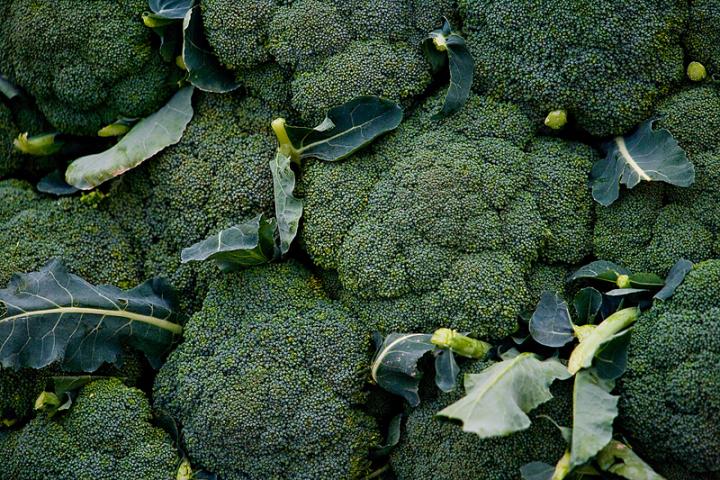
Broccoli is a cool-season crop that, like spinach, can be grown in the spring or fall. In fact, you may be able to get a continual harvest throughout both seasons if you time planting correctly. A member of the cabbage family, broccoli is rich in vitamins.
Planting
- Broccoli can germinate in soil with temperatures as low as 40ºF.
- Broccoli requires full sun and moist, fertile soil that’s slightly acidic. Work in 2 to 4 inches of rich compost or a thin layer of manure before planting.
- For spring plantings, seed or set transplants 2 to 3 weeks before last spring frost date. If you transplant, assume 10 less days for growth or the “days to maturity” on the seed packet.
- For fall plantings, seed 85 to 100 days before your average first fall frost. If you live in a warm climate, a fall planting is best, as broccoli thrives in cool weather. Plant seeds in mid- to late-summer in most places. Check your frost dates.
- Plant seeds ½ inch deep, or set transplants slightly deeper than they were grown originally.
- Within a row, space your plants 12 to 24 inches apart with 36 inches between each row.
- Space plants 12 to 24 inches apart, depending on the side heads you want to harvest.
- If you overseed, you will need to thin seedlings to 12 inches apart to give room for the broccoli to grow.
Care
- Fertilize three weeks after transplanting.
- Provide consistent soil moisture with regular watering, especially in drought conditions. Some varieties of broccoli are heat tolerant, but all need moisture.
- Do not get developing heads wet when watering.
- Roots are very shallow, do not cultivate. Suffocate weeds with mulch.
- Mulch will also help to keep soil temperatures down.
- Learn more about taking care of your broccoli plant.
Pests/Diseases
- Flea Beetles
- Aphids: Curling leaves may mean that the plant’s sap is being sucked by insects. Apply soapy water to all sides of leaves whenever you see aphids.
- Downy mildew: Yellow patches on leaves are usually caused by moist weather. Keep leaves as dry as possible with good air circulation. Buy resistant varieties.
- Cabbage loopers: Small holes on the leaves between the veins mean small green caterpillars are present. Look at the undersides of the leaves. Hand pick if the problem is small or control with Bacillus thuringiensis. Use a floating row cover just after planting through harvest to prevent caterpillars.
- Cabbageworms and other worm pests: Treat same as loopers.
- Cabbage root maggots
- Whiteflies
- Nitrogen deficiency: If the bottom leaves turn yellow and the problem continues toward the top of the plant, the plants need a high nitrogen (but low phosphorus) fertilizer or bloodmeal. Blood meal is a quick Nitrogen fix for yellowing leaves.
- Clubroot: Quickly wilting plants may be due to this fungus in the soil. The entire plant, including all roots and root tendrils, must be gently dug up and removed. If the roots are gnarled and misshapen, then clubroot is the problem. Act quickly to remove the plants so that the fungus doesn’t continue to live in the soil. Do not compost the plants. Raise the pH of your soil to above 7.2. You may need to sterilize your soil, too.
- Woodchucks
Harvest/Storage
- In terms of timing: Harvest broccoli when the buds of the head are firm and tight before the heads flower. If you do see yellow petals, harvest immediately.
- For best taste, harvest in the morning before the soil heats up.
- Cut heads from the plant. taking at least 6 inches of stem.
- Cut the stalk of the main head at a slant, about 5 to 8 inches below the head.
- Most varieties have side-shoots that will continue to develop after the main head is harvested. You can harvest from one plant for many weeks, in some cases, from spring to fall, if you’re summer isn’t too hot.
- Store broccoli in the refrigerator for up to 5 days. If you wash before storing, make sure to dry it thoroughly.
- Broccoli can be blanched and frozen for up to one year.
- Learn more tips on harvesting broccoli.
Recommended Varieties
- ‘Green Goliath’ is heat-tolerant and sprouts side shoots that will mature for harvesting.
- ‘Green Duke’ is heat tolerant and an early variety that’s especially good for Southern gardeners.
- ‘Calabrese’ is a prolific Italian heirloom that sprouts side shoots that will mature for harvesting. Great for fall planting, too.
- ‘Flash’ is a fast-growing heat-resistant hybrid with good side-shoot production once the central head is cut. Great for fall planting, too.
- ‘Paragon’ is a popular variety in Canada.
Wit & Wisdom
- One ounce of broccoli has an equal amount of calcium as one ounce of milk.
- Broccoli is SO good for you that we highly recommend you reacquaint yourself with the amazing health benefits of this princely vegetable.
Recipes
- Broccoli Quiche
- Chicken and Broccoli Alfredo
- Firecracker Beef






